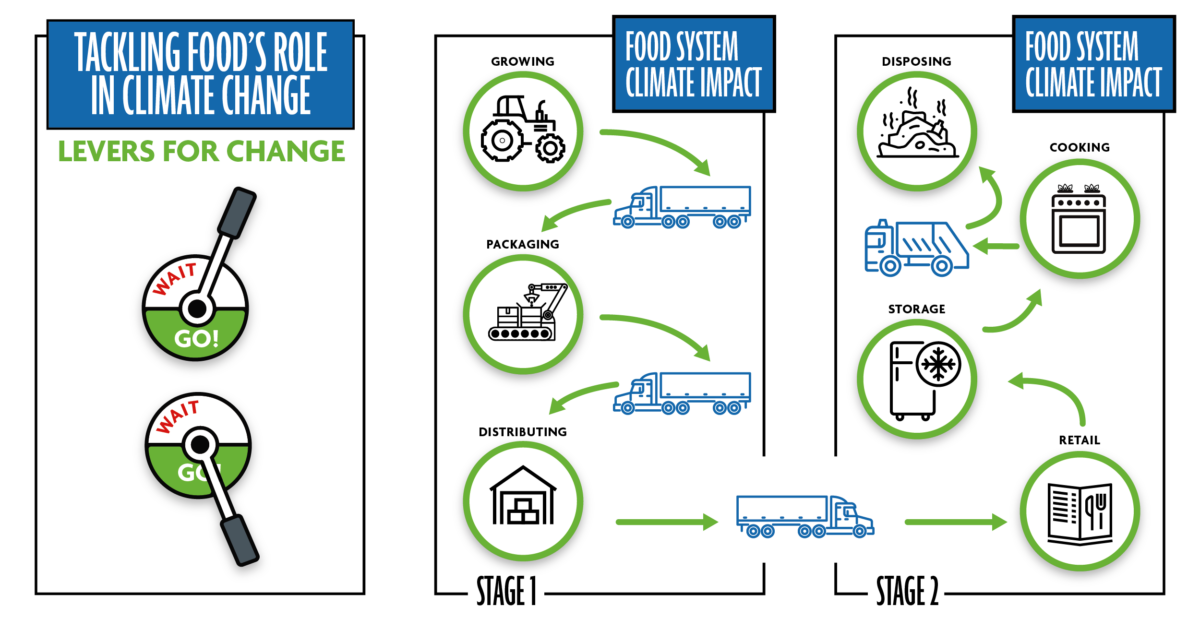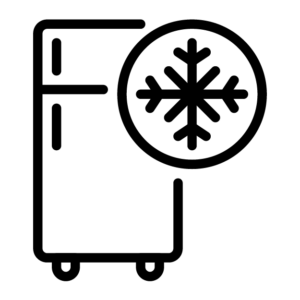The Link Between the Food System and Climate Change
- by bonappetit
 With the recent announcement of our ambitious new calorie-based climate commitment, we’re taking a closer look at how specific facets of the food system contribute to climate change.
With the recent announcement of our ambitious new calorie-based climate commitment, we’re taking a closer look at how specific facets of the food system contribute to climate change.
When we think about climate change, our imaginations often turn to dramatic sources of pollution: smoke billowing from a coal-fired power plant or exhaust from a car’s tailpipe. The reality is far more complicated, as most emissions are usually less visually observable and obvious. In fact, the food system is full of innocuous processes that contribute to climate change in big but often understated ways.
In 2007, we embarked on a journey to determine how we could reduce our companywide greenhouse gas emissions and were shocked at how large of an invisible role food plays in contributing to climate change. With this knowledge in hand, we created our Low Carbon Diet program, making us the first restaurant company to link food with climate change and use that information to take action. In 2015, the diet became a lifestyle with the launch of Low Carbon Lifestyle, a program that focuses on prioritizing plant-based proteins, reducing food waste, trimming our transportation emissions, and decreasing deforestation. Altogether, the growing, packaging, distributing, storing, cooking, and disposing of food represents a whopping one-third of all anthropogenic greenhouse gas emissions worldwide.
Learn more about how specific parts of the food system contribute to climate change:
 |
Growing: Conventional agriculture requires inputs like synthetic fertilizers, which are the biggest single source of overall food-system emissions. ¹ Tillage causes soil erosion which releases carbon into the atmosphere from the soil. If responsibly managed, soil could sequester 5% of anthropogenic emissions generated annually.² |
 |
Packaging: Packaging used to store and keep food fresh accounts for 5.4% of total food system related emissions. ³ Plastic is a major contributor to climate change, with 12.5 to 13.5 million tons of carbon dioxide equivalent being generated annually due to plastic production.⁴ |
 |
Distribution: While food distribution emissions account for a relatively small percentage of overall food system-related emissions, how food is moved matters. For instance, air freighting food emits 50 times more carbon dioxide than moving the same food by ship.⁵ |
 |
Retailing and Storage: Food storage, in the form of refrigeration, represents a significant source of energy consumption by food retailers and supermarkets. This energy consumption makes up about 5% of total food system-related emissions.⁶ |
 |
Disposing: When food breaks down, it produces methane, a greenhouse gas with a more powerful global warming potential than carbon dioxide. If it were its own country, food loss and food waste would be the third largest greenhouse gas emitter, behind the United States and China, according to the World Resources Institute. ⁷ In fact, food loss and food waste account for 8.2% of total annual emissions.⁸ |
After close to 15 years of leadership in combating climate change, we recently announced a new, ambitious commitment to reduce our emissions by 38%, per calorie of food, by 2030. Aligned with the Paris Agreement and science-based criteria set by the World Resources Institute, this new commitment comes with a suite of tools, or levers, that our clients can pull, allowing them to reduce their emissions in different ways to meet their climate goals.
¹ https://news.un.org/en/story/2021/03/1086822
² https://www.wri.org/insights/causes-and-effects-soil-erosion-and-how-prevent-it
³ https://news.un.org/en/story/2021/03/1086822
⁴ https://yaleclimateconnections.org/2019/08/how-plastics-contribute-to-climate-change/
⁵ https://ourworldindata.org/food-choice-vs-eating-local
⁶https://news.un.org/en/story/2021/03/1086822
⁷ https://www.wri.org/insights/whats-food-loss-and-waste-got-do-climate-change-lot-actually
⁸ https://www.wri.org/insights/whats-food-loss-and-waste-got-do-climate-change-lot-actually